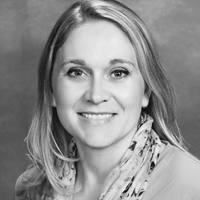History of Selective Mutism
>> Aimee Kotrba: In terms of the history of selective mutism, selective mutism was first identified in 1877. At that time, it was called aphasia voluntaria. It was called that because a researcher noticed that some children in a boarding school were not speaking within the school setting. They were capable of speaking, particularly with their parents or outside of the school setting, but within the school setting there was no speech. He assumed at that point that this was a voluntary decision made by the child, and therefore named it aphasia voluntaria. In 1934, they renamed it elective mutism, still with this assumption that these children were electing not to speak. Then in 1994, our research finally caught up with us and it was renamed selective mutism. It is called selective mutism specifically for the reason that “selective” refers to these children who speak in select situations, but cannot speak in others select situations, such as school or in public. I think many lay people still look at this and believe that children are selecting not to speak. This is a misnomer. Truly selectively mute children are not selecting not to speak, they are overwhelmed with anxiety and that makes them unable or incapable of speech in certain situations.
Definition of SM (DSM-IV)
The newest DMS, which just came out, moved selective mutism to a new area. It is still named selective mutism, but before it was listed under other disorders of childhood. Now it is placed under social phobia and anxiety, which for many reasons is a good move for selective mutism. About 90% of children who have selective mutism also have social phobia. The difference between the two is that children with selective mutism almost have a specific fear or specific phobia of speaking or communicating, whereas social phobia is more of a fear of being the center of attention or fear of people watching and listening to them. 90% of children have both. However, the problem with moving it under social phobia is that about 10% of children just have selective mutism and would not qualify for social phobia. Currently it is placed under social phobia, sort of the “childhood manifestation” of social phobia.
In terms of the definition of selective mutism, it is a specific anxiety disorder. Think of anxiety as being an umbrella term with many diagnoses falling underneath that. There is generalized anxiety, which is the general worrier. There is obsessive-compulsive disorder. There are specific phobias like fears of heights, fears of blood, fears of dogs, etc., and then there is selective mutism. If you have a genetic predisposition that runs in your family, and we will talk about genetic predispositions in a while, you could imagine this is like a light switch that is flipped on. Technically it is flipped on to all anxiety disorders. If there was a family member who had generalized anxiety or OCD, it does not mean that the child will manifest with that same type of anxiety disorder, but it certainly raises the probability that they will manifest some type of anxiety disorder.

